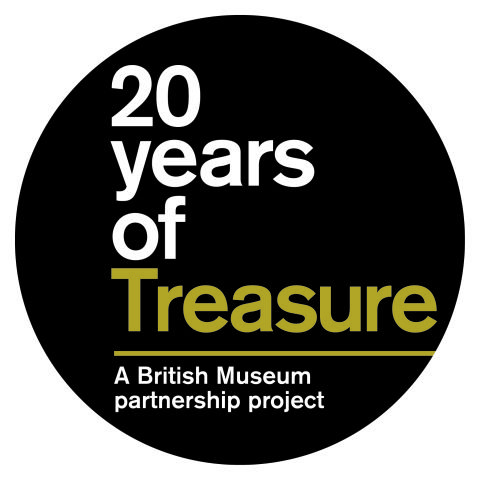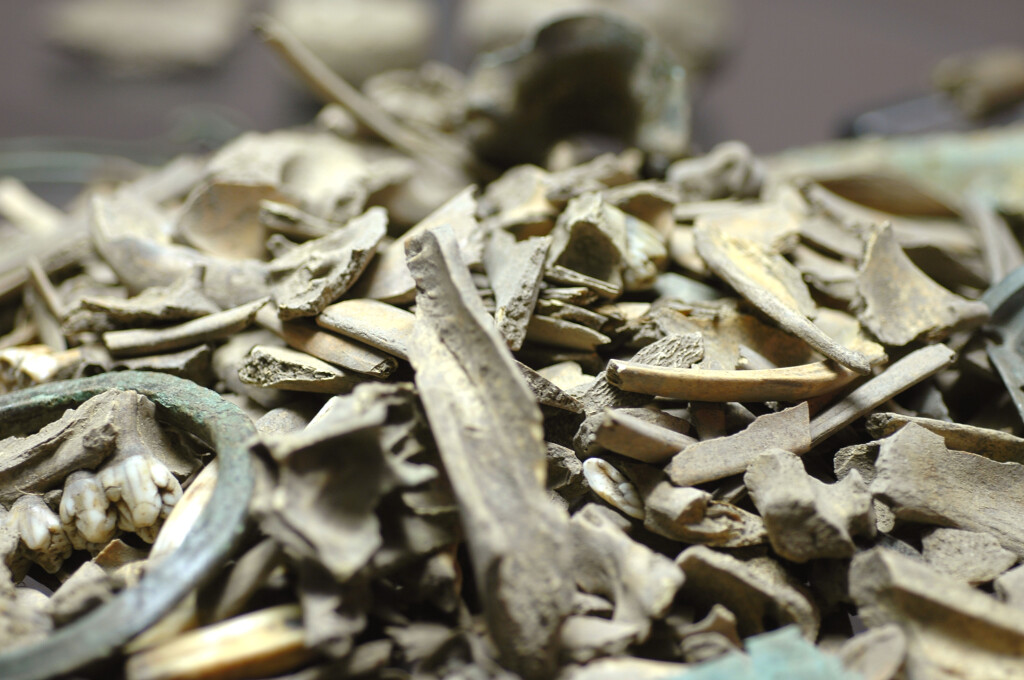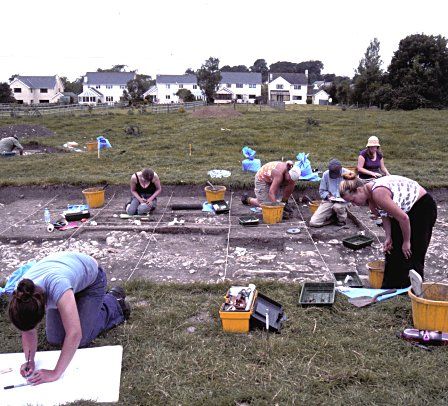Top 20 Treasure Competition
, 3 May 2017
Over the last few months you may have seen the Saving Treasures; Telling Stories team on social media using the hashtag ‘Finds Friday’, where we’ve been showcasing some of our wonderful treasure and non-treasure items recorded by the Portable Antiquities Scheme Cymru.
This month we’d like to focus on two special finds from Wales: The Abergavenny Coin Hoard and a prehistoric feasting site in Llanmaes.
Why these two finds?
Both have been nominated in a nationwide competition, held by the British Museum and The Daily Telegraph, to search for the nation’s favourite treasure item from the ‘Top 20’ list.
2017 marks the 20th anniversary since the passing of the 1996 Treasure Act and items on the ‘Top 20’ list highlight some of the most important treasure discoveries since the Treasure Act.
We might be a tad biased towards which ones we’ll be voting for, but we want to share the history behind these finds as they really do have a story to tell, or in the case of Llanmaes, an enigmatic mystery as to what was actually happening at the site. You can read about the 20 items by clicking this link, and don't forget to vote!
20 Years of Treasure logo
Llanmaes
Our first nomination on the ‘Top 20’ treasure list is a site, rather than a single group of objects. The discovery is a prehistoric feasting place and settlement, uncovered in Llanmaes, in the Vale of Glamorgan.
This important site was discovered following the reporting of a potential treasure find by two metal detectorists in 2003, and excavation continued for the next seven years by archaeologists from the National Museum of Wales, assisted by students from Cardiff University and local volunteers.
The story behind Llanmaes
The earliest remains on the site, dating to about 2150-1950 BC, are the cremated remains of an adult male, which were buried in an urn. It seems that this burial provided the focus for later settlement, which yielded treasure objects such as a gold bead. One mystery object in the shape of a great white shark’s tooth has left archaeologists puzzled. We’re not too sure where it came from or why it was left there!
By the beginning of the Iron Age (about 675 BC) this settlement had been abandoned, but the site continued to be the focus of human activity in the form of feasting, which left behind an extensive midden deposit. This is the first known example from Wales, of a class of middens representing remarkable accumulations of cultural material gathered by communities at the beginning of the Iron Age. This has revealed an extraordinary prehistoric feasting mound, containing thousands of pig bones, further feasting vessels, bronze cauldrons, pottery and axes.
Unexpectedly, nearly three-quarters of the animal bones were from pigs – a far higher proportion than is usual for such deposits, and, even more remarkable is the discovery that the majority of the pigs’ bones were from the right fore-quarter of the animal. Similarly, some of the axe-heads are of a type associated with parts of northern France, so it seems as though people were converging on Llanmaes during the Early Iron Age from a wide area to engage in cultural activities which had clear rules and accepted practices.
Feasting seems to have come to an end at the site during the Roman period, when changing cultural practices made the earlier rituals less appropriate, but evidence of continued Roman occupation suggests that it still held meaning for local people into the 4th century AD.
The community at Llanmaes were closely involved with the excavations over the years, and the National Museum’s Archaeology department brought in a number of school groups to work with artists on creative responses, such as performances, inspired by the site.
Feasting and pig bones from Llanmaes
(Credit: Amguedffa Cymru) 
Llanmaes excavation
Abergavenny hoard
In April 2002 three metal-detectorists had the find of their lives in a field near Abergavenny, Monmouthshire where they found a scattered hoard of 199 silver pennies.
The Abergavenny hoard is the earliest Norman hoard from Wales and provides a vivid picture of monetary circulation in the Welsh March in the 1080s CE. It includes 130 coins of the Anglo-Saxon king Edward the Confessor (1042-66) and 69 coins of the Norman king William the Conqueror (1066-87).
Where did they come from?
Norman incursions into Gwent (present-day Monmouthshire) had followed hard on the heels of the conquest of England by Duke William in 1066 and they brought with them the habit of using coins.
The 199 silver pennies provide a rich mixture of issues of Edward the Confessor (1042-66) and William the Conqueror (1066-87); there are coins of 104 moneyers from 36 mints, with Hereford prominent.
The coins had been lost or hidden in a cloth bag, after about 1080 CE and for most people living in that time they would have represented several months’ pay. However, the lack of positive archaeological context makes it impossible to judge whether the coins had been concealed deliberately or were simply lost. We shall probably never know quite why these coins ended up in the corner of a field in Monmouthshire but, as well as expanding our knowledge of the coinage itself, they will cast new light on monetary conditions in the area after the Norman Conquest.
And there we have it, our two treasure finds on the ‘Top 20’ treasures list.
The online voting continues until May 15th, and you can vote for LLanmaes or the Abergavenny Hoard by following this link:
http://www.telegraph.co.uk/wellbeing/mood-and-mind/treasure-20-vote-favourite/.


